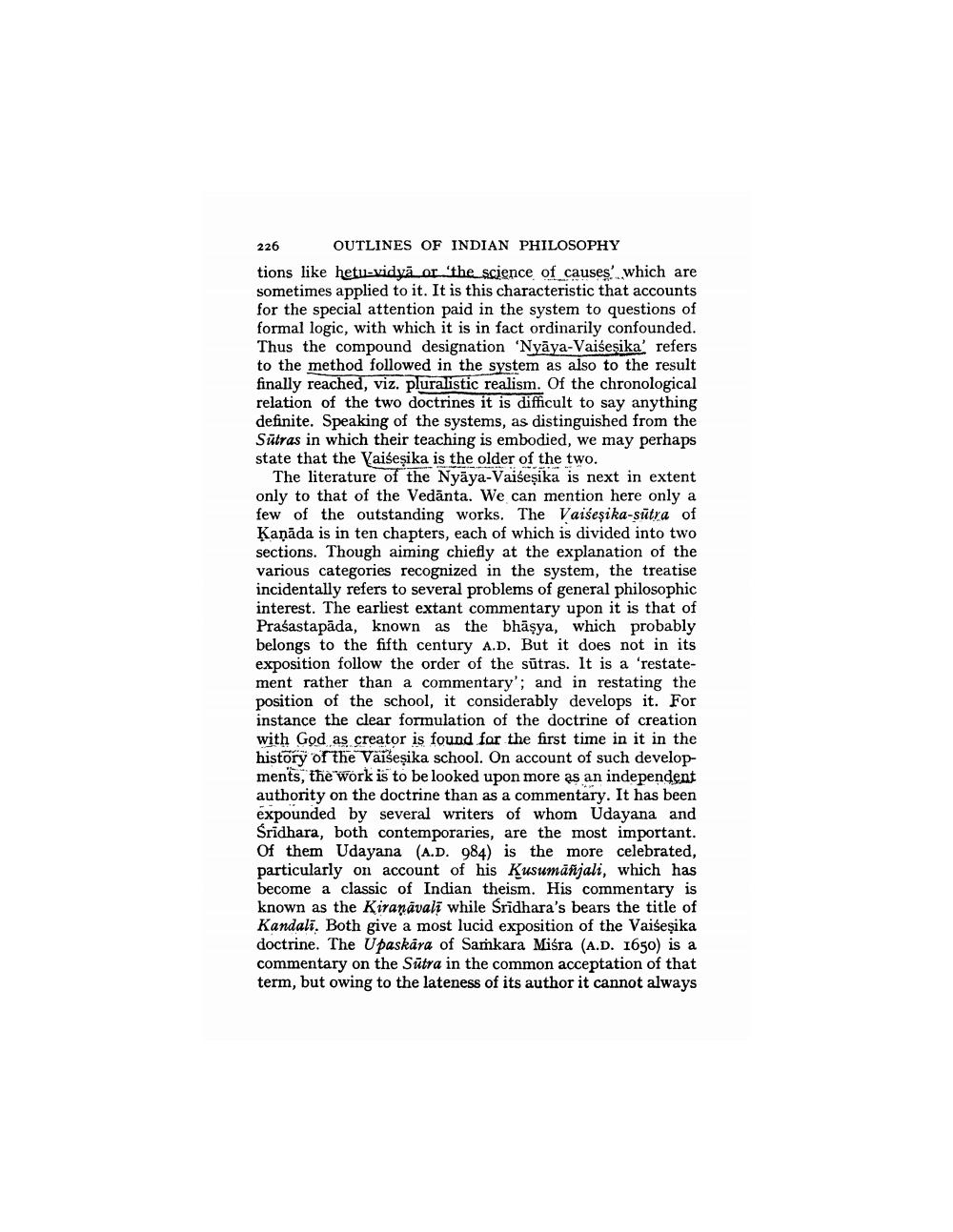________________
226 OUTLINES OF INDIAN PHILOSOPHY tions like hetu-vidyā or the science of causes' which are sometimes applied to it. It is this characteristic that accounts for the special attention paid in the system to questions of formal logic, with which it is in fact ordinarily confounded. Thus the compound designation 'Nyāya-Vaiseşika' refers to the method followed in the system as also to the result finally reached, viz. pluralistic realism. Of the chronological relation of the two doctrines it is difficult to say anything definite. Speaking of the systems, as distinguished from the Sutras in which their teaching is embodied, we may perhaps state that the Vaiseșika is the older of the two.
The literature of the Nyāya-Vaišeşika is next in extent only to that of the Vedānta. We can mention here only a few of the outstanding works. The Vaišeşi ka-sutra of Kanāda is in ten chapters, each of which is divided into two sections. Though aiming chiefly at the explanation of the various categories recognized in the system, the treatise incidentally refers to several problems of general philosophic interest. The earliest extant commentary upon it is that of Prasastapāda, known as the bhāsya, which probably belongs to the fifth century A.D. But it does not in its exposition follow the order of the sūtras. It is a 'restatement rather than a commentary'; and in restating the position of the school, it considerably develops it. For instance the clear formulation of the doctrine of creation with God as creator is found for the first time in it in the history of the Vaišesika school. On account of such developments, the work is to be looked upon more as an independent authority on the doctrine than as a commentary. It has been expounded by several writers of whom Udayana and Sridhara, both contemporaries, are the most important. Of them Udayana (A.D. 984) is the more celebrated, particularly on account of his Kusumäñjali, which has become a classic of Indian theism. His commentary is known as the Kiranavalī while Sridhara's bears the title of Kandali. Both give a most lucid exposition of the Vaiseşika doctrine. The Upaskara of Samkara Misra (A.D. 1650) is a commentary on the Sūtra in the common acceptation of that term, but owing to the lateness of its author it cannot always




